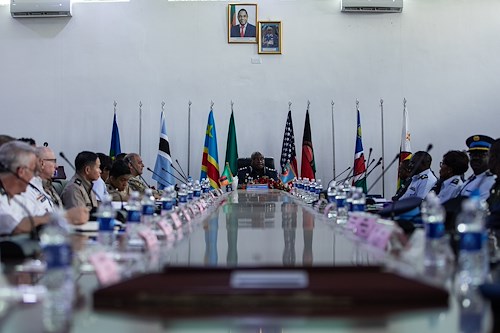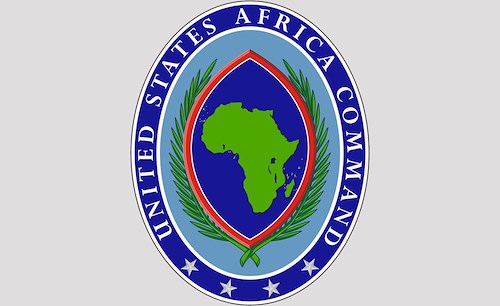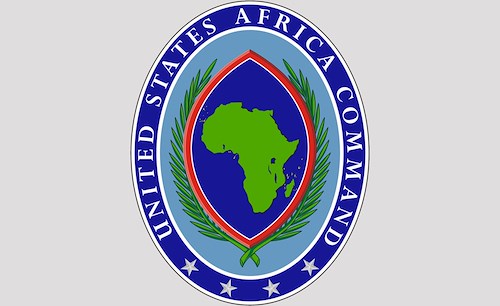An Air Force wing that stood up at Joint Base McGuire-Dix in Lakehurst, N.J., to open airfields anywhere in the world on short notice soon will take on a new mission, helping African militaries establish their own air mobility systems.
The 621st Contingency Response Wing "Devil Raiders" and the wing's sister unit at Travis Air Force Base, Calif., stand ready to be respond within 12 hours to deliver anything from troops to humanitarian assistance where no operational airfield exists, explained Air Force Colonel Chris "Krispy" Patterson, the wing commander.
"We are that mobile airfield that can go anywhere in the world to open up an existing airfield or create an airfield so these mobility airplanes can land and offload their cargo," he said.
It's a capability the Devil Raiders have been called on since being stood up in 2005 to support combat operations as well as humanitarian relief missions in Pakistan, Haiti and Japan. Now, a new squadron being established within the wing will share that expertise to help African militaries build or strengthen their own air mobility systems.
The 818th Mobility Support Advisory Squadron was established in April and is expected to reach initial operational capability in December, Patterson said.
With one-third of its 73 airmen on board, and the rest to arrive by the year's end, the airmen already are laying plans for their first engagements on the African continent. An initial planning conference is expected to take place next month in Ghana, with the first mentoring, advising and instruction there likely by spring, Patterson said.
"We won't be teaching people how to fly airplanes," Patterson clarified. "We want to teach them how to develop an air mobility system."
The instruction will cover the myriad issues such a system entails: scheduling and maintaining them, establishing command and control, setting up an airfield, running an air traffic control system, developing a sustainable fuel supply, and training air crews, among them.
"My mission is to build partner capacity, and my goal is to leave them physically better than when we got there," Patterson said. "That way, when we leave, they will have skills and knowledge they did not have when we got there."
Air mobility is critical to a government's ability to get to the farthest reaches of its territory, particularly in times of crisis, Patterson said.
"If there is a natural disaster in a part of the country and the president of that country can't get there to see his people and assure they that they are going to be taken care of, somebody else is going to do it for them -- even if it is somebody we don't want doing that," he said.
"To me, that is fundamentally what we are trying to attack," Patterson said. "How do we help countries become stronger so they aren't ripe for terrorists and insurgents to go in and gain a foothold and start developing and training that kind of mindset?"
Being able to open up airfields, deliver relief supplies, conduct aeromedical evacuations and provide other disaster support helps validate a government's power, particularly during potentially destabilizing times of crisis, he said.
That, in turn, will help enable nations to provide their own first responses when needed. Ultimately, Patterson said, he expects it to put less future demand on the 621st Contingency Response Wing.
As the mentorship program develops and grows, Patterson said he envisions tailoring it to specific countries' needs by tapping expertise from across the 621st Contingency Response Wing.
In the six years since it was stood up along with the 615th Contingency Response Wing at Travis Air Force Base, the 621st airmen have responded to pressing combat as well as humanitarian response requirements.
When President Barack Obama announced the 30,000-troop surge for the war in Afghanistan in December 2009, the wing immediately dispatched airmen there to determine where the arriving forces and their equipment could land.
"The airfields were already operating mostly at maximum capacity. So we needed to figure out a way to increase the air mobility capacity within Afghanistan," Patterson said.
A 17-person detachment from the 621st wing conducted airfield assessments throughout the country to determine which airfields that weren't already receiving large C-17 Globemaster III and C-5 Galaxy aircraft could be expanded to accommodate them.
"That really became the backbone that gave [U.S. Transportation Command] the ability to figure out how they were going to answer the president's challenge of putting 30,000 additional forces there," Patterson said.
Similarly, an air mobility operations squadron from the 621st deployed to Ramstein Air Base, Germany, within four hours of being called to help plan tanker air refueling support for sorties enforcing the no-fly zone over Libya.
When the United States handed control of that mission over to NATO, squadron members helped stand up the NATO air operations center in Naples, Italy, then returned home to New Jersey.
That explains in a nutshell what the 621st Contingency Response Wing is all about, Patterson said.
"We deploy versatile mobility airmen to solve problems in complex environments," he said. And once those problems are solved, they return to their home base to ready themselves for the next short-notice deployment.
"That's what makes us different from all the other [Air Force] wings," Patterson said. "We never know where we are going to go and we never know what the problems are going to be."
As a result, wing leaders teach their airmen that no matter how big the challenge that confronts them, "No" is not an acceptable answer, Patterson said.
"It's not 'No, I can't.' It's 'Hmmm. Let me figure out how I can,'" he said. "Everywhere we go, it is going to be different, so we want our airmen to thinking about how they are going to tackle the problems they face."
At no time is that capability more critical -- or more personally gratifying -- than when it's to relieve human suffering in a time of crisis, Patterson said.
Just seven months after it was stood up in 2005, the wing responded to its first humanitarian crisis, the 7.6-magnitude earthquake in Pakistan. Last summer, as the 621st deployed again to Pakistan to provide support during massive flooding there, some of the returning airmen were delighted to run into some of the same people they had worked with at the airport five years earlier.
The wing also sent aerial porters to Misawa Air Base, Japan, following the magnitude 9.0 earthquake and tsunami there in March.
But the 621st Contingency Response Wing's largest humanitarian response mission to date followed a devastating January 2010 earthquake in Haiti that left much of the country in rubble. Nearly every one of the wing's 650 airmen participated, opening the Port-au-Prince airport, securing the airfield and providing air traffic control as aircraft arrived from around the world bearing relief supplies.
Patterson said the chance to support these kinds of missions and make a real difference in people's lives is the biggest reward for a 621st Contingency Response Wing airman whose live resolves around being ready to deploy anywhere, any time.
"It makes you proud to see how passionate the airmen are about what they do," he said. "They are the ones on the ground, shaking hands, delivering food, holding little kids. They all have a tremendous sense of pride.
"And when you listen to some 20-year-old tell his story, you realize that he understands how what he does fits into the bigger, global picture," he added.




